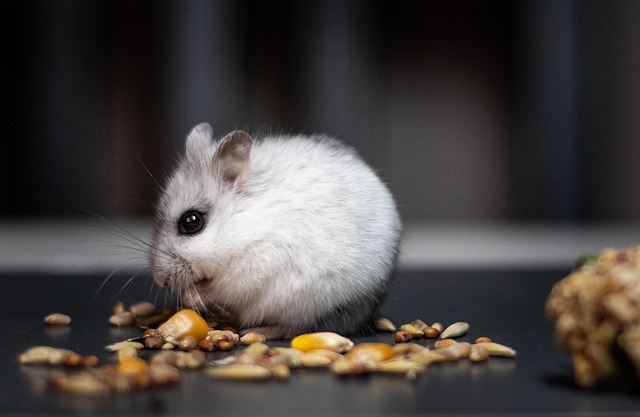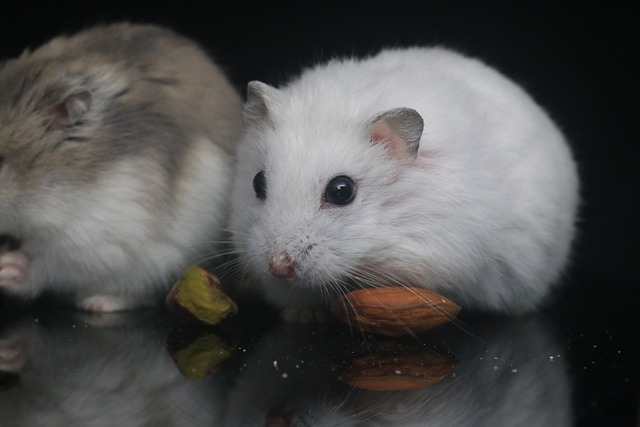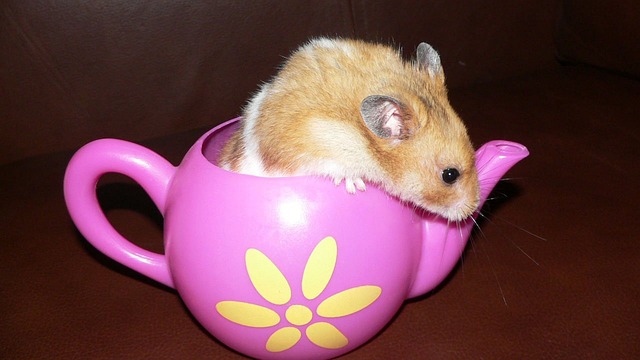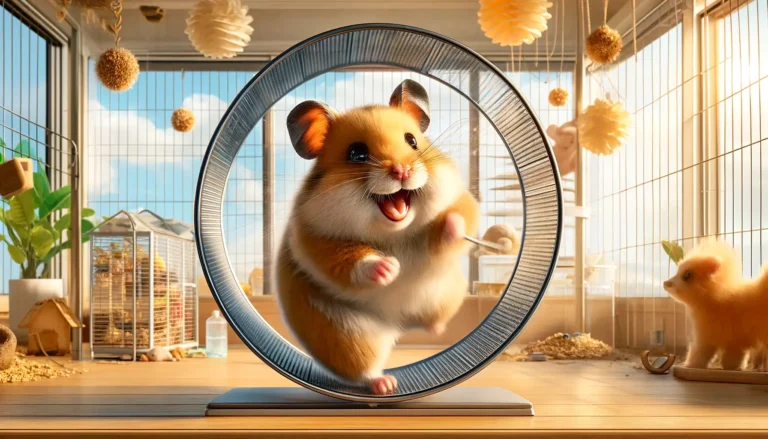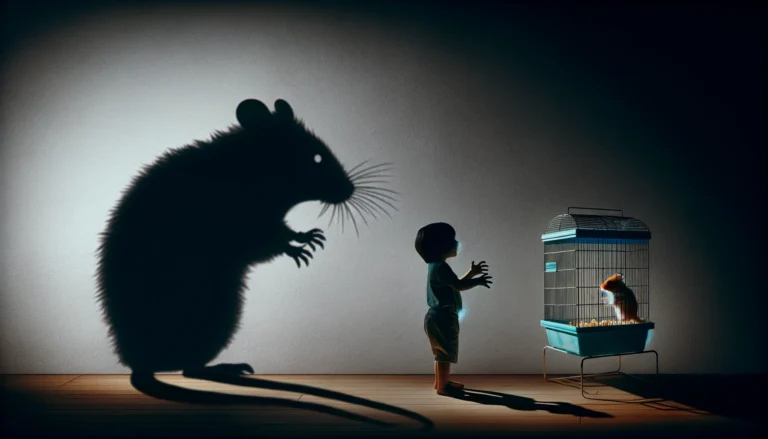Hamsters Or Rabbits Who Are The Best – Hamsters.pk
Adorable Appearance: Comparing the Cuteness Factor of Hamsters and Rabbits
When it comes to choosing a small pet, many people find themselves torn between the irresistible charm of hamsters and the adorable appeal of rabbits. Both of these furry creatures have their own unique features that contribute to their overall cuteness factor. In this article, we’ll take a closer look at the physical attributes that make hamsters and rabbits so endearing.
Hamsters: Tiny Balls of Fluff
Hamsters are known for their compact size and round, fluffy appearance. Their small stature, typically ranging from 2 to 6 inches in length, adds to their cuteness factor. They have short, stubby legs and tiny paws, which make them look even more adorable when they move around. Hamsters also have chubby cheeks that they use to store food, giving them a delightfully pouty look.
One of the most appealing aspects of hamsters is their soft, fluffy fur. They come in a variety of colors and patterns, from the classic golden brown of Syrian hamsters to the more exotic black and white of the Campbell’s dwarf hamster. Their fur is often described as silky and smooth, making them irresistible to touch.
Rabbits: Lovable Long-Eared Companions
Rabbits, on the other hand, have a different kind of charm. They are generally larger than hamsters, with some breeds reaching up to 20 inches in length. One of the most distinctive features of rabbits is their long, floppy ears, which can be upright or lop-eared depending on the breed. These ears give rabbits an undeniably cute and expressive look.
Rabbits also have soft, plush fur that comes in a wide range of colors and patterns. From the classic white of the New Zealand rabbit to the striking markings of the Dutch rabbit, there’s a rabbit to suit every preference. Their fur is often described as dense and velvety, making them a joy to pet and cuddle.
Another endearing feature of rabbits is their wiggly noses. Their noses are constantly twitching, which adds to their overall cuteness factor. Rabbits also have large, expressive eyes that can melt even the hardest of hearts.
The Verdict: A Matter of Personal Preference
Ultimately, the decision between a hamster and a rabbit as the cutest small pet comes down to personal preference. Some people are drawn to the tiny, fluffy charm of hamsters, while others can’t resist the long-eared appeal of rabbits. Both of these creatures have their own unique features that contribute to their overall adorableness.
Whether you choose a hamster or a rabbit, you can be sure that you’ll have a cute and lovable companion to bring joy to your life. These small pets may have different appearances, but they both have the power to capture our hearts with their irresistible cuteness.
Personality Traits: Exploring the Temperaments of Hamsters and Rabbits
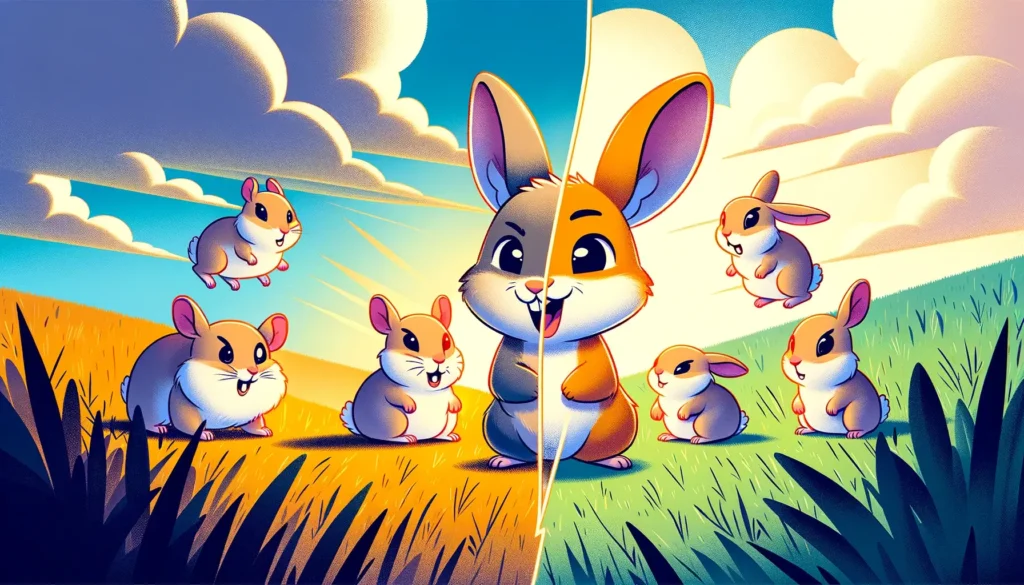
When considering a small pet, it’s essential to look beyond their adorable appearances and examine their personality traits. Both hamsters and rabbits have distinct temperaments that can greatly influence their suitability as pets. In this article, we’ll delve into the typical personality characteristics of these furry companions.
Hamsters: Solitary and Nocturnal
Hamsters are known for their solitary nature. Unlike some other small pets, they prefer to live alone and can become stressed or aggressive when housed with other hamsters, especially if they are not littermates. This solitary disposition makes them ideal for individuals who want a low-maintenance pet that doesn’t require constant attention.
Another notable trait of hamsters is their nocturnal behavior. They are most active during the night, running on their exercise wheels and exploring their habitat. This means that they may not be the best choice for those who want a pet to interact with during the day.
Despite their solitary tendencies, hamsters can still form bonds with their owners. With regular gentle handling and patience, they can become tame and enjoy being held. However, it’s important to respect their need for alone time and not force interaction when they are not in the mood.
Rabbits: Social and Affectionate
In contrast to hamsters, rabbits are highly social animals. They thrive on interaction and companionship, both with their own species and with their human caregivers. Many rabbit owners choose to keep their pets in bonded pairs or groups to ensure they have a constant source of social stimulation.
Rabbits are also known for their affectionate nature. They can form strong bonds with their owners and enjoy being petted, groomed, and even cuddled. They have unique personalities, with some being more outgoing and curious while others are more reserved and shy.
One important aspect of a rabbit’s personality is their intelligence. They are clever animals that require mental stimulation to prevent boredom and destructive behavior. Providing them with toys, puzzles, and plenty of space to explore can help keep their minds engaged.
Temperament Considerations
When deciding between a hamster and a rabbit, it’s crucial to consider your own lifestyle and preferences. If you’re looking for a pet that is low-maintenance and content with solitary living, a hamster may be the right choice for you. They are well-suited for individuals with limited space or busy schedules.
On the other hand, if you want a pet that is more social and interactive, a rabbit may be a better fit. They require more attention, space, and dedication but can provide a deeper level of companionship. Rabbits are ideal for those who have the time and resources to devote to a more engaging pet experience.
Conclusion
Understanding the personality traits of hamsters and rabbits is essential when choosing the right small pet for your home. While hamsters are solitary and nocturnal, rabbits are social and affectionate. Each species has its own unique temperament that can greatly impact their suitability as pets.
By carefully considering your own lifestyle and the personality characteristics of these adorable creatures, you can make an informed decision and find the perfect furry companion to bring joy and companionship into your life.
Care and Maintenance: Assessing the Ease of Keeping Hamsters and Rabbits as Pets
When deciding between a hamster and a rabbit as a pet, it’s important to consider the level of care and maintenance required for each species. While both can make wonderful companions, they have distinct needs that should be taken into account. In this article, we’ll assess the ease of keeping hamsters and rabbits as pets, focusing on their housing, diet, health, and overall care requirements.
Housing Requirements
One of the primary considerations when choosing a pet is the amount of space they need. Hamsters are small and compact, making them suitable for those with limited living space. They can be comfortably housed in a cage or aquarium with a minimum size of 24 inches by 12 inches, equipped with bedding, a wheel, and hiding spots.
Rabbits, on the other hand, require significantly more space. They need a spacious indoor enclosure or a dedicated room where they can hop, stretch, and play. A minimum living space of 12 square feet is recommended for a single rabbit, with an additional 24 square feet of exercise space. Outdoor hutches can also be used, provided they are secure and protected from predators and extreme weather conditions.
Dietary Needs
Both hamsters and rabbits have specific dietary requirements that must be met to ensure their health and well-being. Hamsters are omnivores and require a balanced diet consisting of commercial hamster food, fresh vegetables, and occasional treats. They also need access to fresh, clean water at all times.
Rabbits, in contrast, are herbivores and have a more complex digestive system. Their diet should consist primarily of hay, which aids in digestion and helps wear down their continuously growing teeth. Fresh vegetables and a limited amount of pellets should also be provided. Like hamsters, rabbits need a constant supply of fresh water.
Health and Veterinary Care
Regular health check-ups and preventive care are essential for both hamsters and rabbits. Hamsters are generally low-maintenance in terms of health care, but they can be prone to certain issues such as overgrown teeth, skin problems, and respiratory infections. Regular cleaning of their cage and monitoring of their health can help prevent and address these concerns.
Rabbits, while generally hardy, have more specific health needs. They require annual veterinary check-ups, vaccinations, and dental examinations. Rabbits are prone to digestive issues, dental problems, and fly strike, which can be life-threatening if left untreated. Proper diet, exercise, and regular grooming are essential to maintaining a rabbit’s health.
Time Commitment and Interaction
The level of interaction and time commitment required for hamsters and rabbits differs significantly. Hamsters are solitary and independent, content with minimal human interaction. They are well-suited for individuals with busy lifestyles who can provide daily feeding, water changes, and cage cleaning.
Rabbits, on the other hand, are social and require daily interaction. They thrive on human companionship and should be given several hours of supervised playtime outside their enclosure each day. Rabbits also benefit from being kept in bonded pairs, which increases their social and emotional well-being but also requires more care and attention from their owners.
Conclusion
When assessing the ease of keeping hamsters and rabbits as pets, it’s clear that both species have unique care and maintenance requirements. Hamsters are generally lower maintenance, requiring less space, simpler diets, and minimal interaction. Rabbits, while still relatively easy to care for, need more space, a specialized diet, regular veterinary care, and daily interaction.
Ultimately, the choice between a hamster and a rabbit depends on your lifestyle, living situation, and the level of commitment you’re willing to make. By carefully considering the care and maintenance needs of each species, you can make an informed decision and provide a loving, nurturing home for your new furry companion.
Companionship and Interaction: Evaluating the Bonding Experience with Hamsters and Rabbits
When choosing a small pet, many people prioritize the potential for companionship and interaction. Both hamsters and rabbits can form bonds with their owners, but the nature and depth of these relationships differ. In this article, we’ll evaluate the bonding experience with hamsters and rabbits, exploring their social needs, communication styles, and the level of interaction they typically provide.
Hamsters: Independent yet Affectionate
Hamsters are solitary animals by nature, and they don’t require constant companionship from their owners or other hamsters. They are content spending much of their time alone, exploring their habitat, and engaging in solitary activities. However, this doesn’t mean that hamsters can’t form bonds with their human caregivers.
With patience and regular gentle handling, hamsters can become quite tame and affectionate. They may enjoy being held, petted, and even sitting in their owner’s lap for short periods. The key to bonding with a hamster is to respect their individual personalities and preferences, as some may be more receptive to human interaction than others.
Hamsters communicate primarily through body language and vocalizations. Learning to interpret their squeaks, chirps, and postures can help you understand their moods and needs. For example, a hamster standing on its hind legs with its ears perked up is usually a sign of curiosity or alertness.
Rabbits: Social and Engaging
Rabbits, in contrast to hamsters, are highly social creatures that thrive on companionship and interaction. They have a strong need for bonding, both with their own species and with their human caregivers. Many rabbit owners report that their pets become deeply attached to them, seeking out their attention and affection.
Rabbits are capable of forming complex social relationships and can develop unique personalities. They communicate through a variety of means, including body language, vocalizations, and even subtle facial expressions. Learning to interpret a rabbit’s signals, such as tooth-clicking (a sign of contentment) or thumping (a warning or sign of distress), can help you better understand and bond with your pet.
Interacting with a rabbit typically involves more than just holding and petting. Rabbits enjoy playing, exploring, and even training. They can be taught simple tricks and commands using positive reinforcement techniques, which can further strengthen the bond between rabbit and owner. Providing your rabbit with plenty of toys, hiding spots, and supervised playtime outside their enclosure can keep them mentally stimulated and engaged.
The Bonding Journey
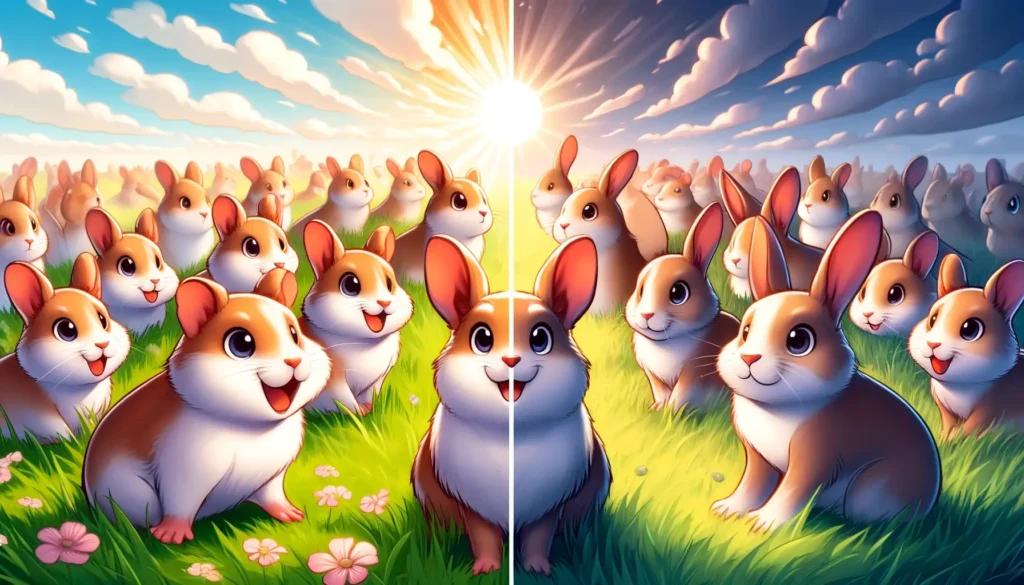
Regardless of whether you choose a hamster or a rabbit, bonding with your pet is a gradual process that requires patience, consistency, and understanding. It’s important to approach your pet on their terms, respecting their boundaries and preferences.
For hamsters, bonding often involves short, frequent interactions that gradually increase in duration as your pet becomes more comfortable with handling. Offering treats during these sessions can help create positive associations with human interaction.
Bonding with a rabbit may involve more extensive interaction, such as supervised playtime, grooming, and even training sessions. Sitting quietly with your rabbit, allowing them to approach you on their own terms, can help build trust and encourage a deeper connection.
Conclusion
Evaluating the companionship and interaction potential of hamsters and rabbits reveals distinct differences between the two species. While hamsters are more independent and content with solitary living, they can still form affectionate bonds with their owners. Rabbits, on the other hand, are highly social and thrive on regular interaction and companionship.
Ultimately, the bonding experience with either a hamster or a rabbit depends on individual personalities, as well as the time and effort invested by their human caregivers. By understanding the social needs and communication styles of these beloved small pets, you can create a fulfilling and enriching bond that brings joy and companionship to both you and your furry friend.


